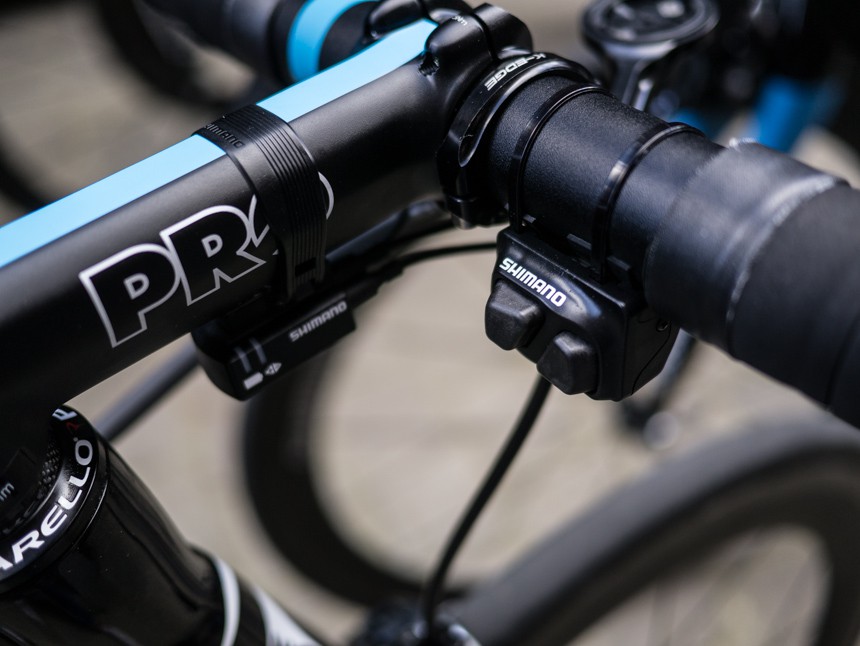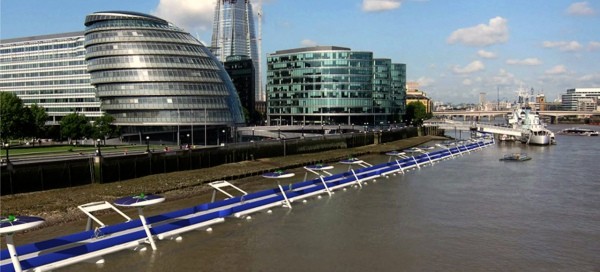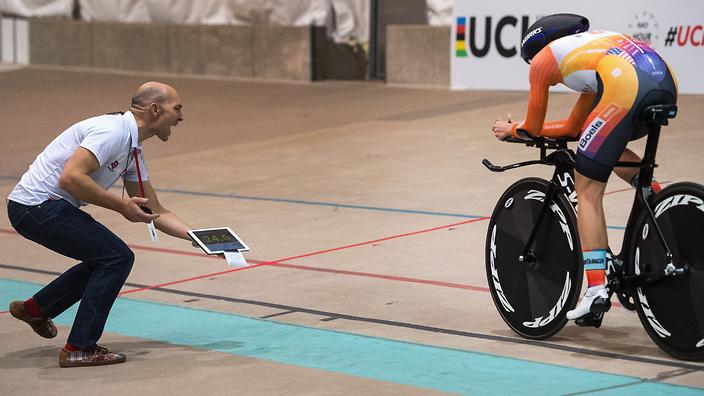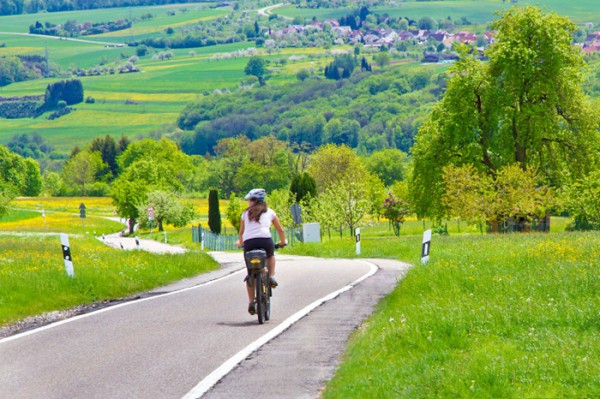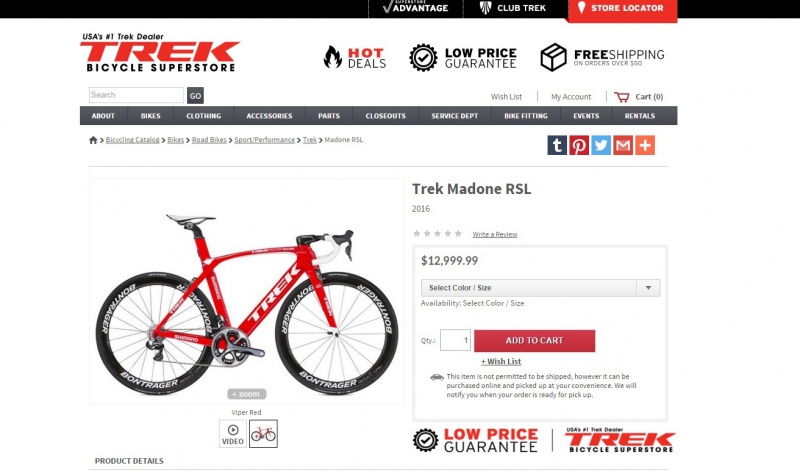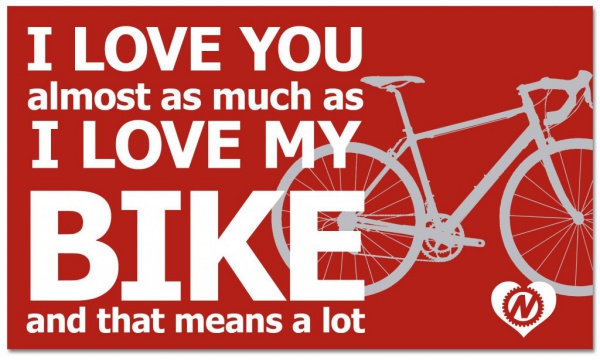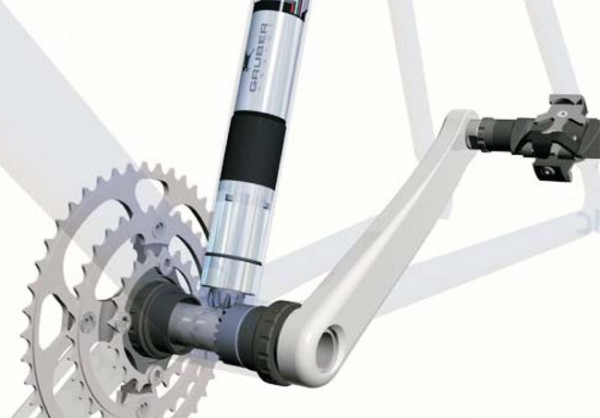Happy Father’s Day from all of us at I Love Bicycling. (That is if you’re a father… and a cyclist…just kidding but you probably are a cyclist.) Go get a fun ride in. It’s your day. Enjoy it. -The I Love Bicycling Team
News
Cliff Bar Recall – FYI – June 3, 2016
Cliff Bar issued a voluntary recall on June 3rd, 2016 of three of their products due to concerns over listeria contamination from sunflower kernels supplied by SunOpta. This follows a number of other recalls from other companies that contained the companies sunflower kernels. Cliff Bar did not have any confirmed cases of people getting sick from eating their products. The following products with date ranges falling within a set period are outlined below.
Only the flavors meeting the following criteria are affected by the recall:
- CLIF BAR® Nuts & Seeds energy bar all pack configurations with coded date ranges starting 08JUN16 through 21JAN17
- CLIF BAR® Sierra Trail Mix energy bar all pack configurations with coded date ranges starting 05JUN16 through 24MAR17
- CLIF® Mojo® Mountain Mix® trail mix bar all pack configurations with coded date ranges starting 16JUN16 through 02FEB17
More information can be found at: notice.clifbar.com
Bike Electronic Shifting – What Is It And Why Should You Be Interested?
It’s Not So New?
Electronic shifting is nothing new. Cyclists began seeing versions of electronic shifting bikes bikes in about 1990 with offerings from Suntour and Mavic — but it’s been sketchy going forward. Other companies also tried it, but most of them failed at commercial applications because of reliability issues — some failed in the rain for example — and were subsequently discontinued.
The Big Three
Bike Electronic Shifting – What Is It And Why Should You Be Interested?
How They Work
Cables Versus Wires
Hidden Wires
Wires can be routed out of the way inside tubes, hidden from sight and exposure. It increases their ability to survive crashes and hard riding and also eliminates the effect of dirt, mud, and other foreign objects that get inside traditional cable housings.
Shifter Variations
Shifters can be placed wherever you want them. The re-location benefit probably pays the most dividends on a road bike where you can position the shifters almost anywhere in the drops, on top of the bars or both. But even just being able to achieve an optimum reach for your thumbs on a mountain bike’s flat bars is beneficial as well.
Fast and Accurate
The biggest benefit is speed and accuracy of shifts. Without having to think about using it, electronic shifting gives you the fastest possible shifts up or down. The system won’t succumb to the shock of impacts or jostling of rough terrain, and that’s a huge advantage in cyclocross. If you’re able to hit the button, it will complete the shift perfectly — every time. There’s no slop or waiting for the chain to crawl onto the big chainring. It just moves to its new position with controlled accuracy.
Safer in Packs and Pacelines
You can get dual shift buttons in your drops or on the hoods — it’s a huge safety advantage of electronic shifting. You never need to remove a hand to execute a shift. This is extremely valuable when in a tight pack situation or paceline where even the slightest wobble can take out the whole group.
Faster Rides Overall
Electronic shifting should make you faster. The more hilly and curvy, the more the advantage. You brain is wired directly into your drivetrain. You don’t even think about shifting and might not even remember that you shifted the bike. Your thumbs just seem to shift automatically. It just happens. You shift far more often and more efficiently using both chainrings because it is so easy and automatic. You should never get bogged down in a corner because you’re in a big gear and can’t reach to shift while trying to accelerate.
The Double Shift
The double shift. With electronic shifting you really can wait until the last second and you can and will double shift – drop to the small ring while simultaneously shifting down two cogs in the back. We all do it.
The Battery
1,000 Mile Range
Maintenance Issues
Electronic shifter maintenance — not so much. Any real issues with your components typically require them to be serviced by a trained technician which is probably good since not too many cyclists have the engineering expertise to figure out what’s wrong, or even know where to begin to fix it. Most fixes require connecting the bike to a computer to diagnosis and/or update the software. (You never thought you would hear those words did you?)
Don’t Rule Out Mechanical
The innovation of bike electronic shifting shouldn’t automatically be the death of mechanical shifters. Some of the best mechanical systems are beginning to approach the performance of electronic so mechanical shifters aren’t going anywhere. But there’s no reason why mechanical and electrical systems can’t share the road together and that’s probably the way it’s headed. Electric brakes? Probably not. They’re going to hydraulic disc.
Alternative Transportaion — A Floating Cycling Highway in London
Outside the Box
London has proposed the floating cycling highway on the Thames river as a perfect example of thinking outside-the-box to solve deep-seated traffic and pollution problems. The new proposal challenges conventional transportation with it’s unique design because it floats entirely on water.
The Thames Deckway Project
Untapped Potential
It’s For Everyone
The Design
Safety on Water
A Fleet of Bikes
Funding, Always an Issue
Self Supporting
Floating Cycling Highway
New Women’s Hour Record Set By American Evelyn Stevens
On Saturday the 27th of February, 2016, inside an inflatable dome built over an outdoor track in Colorado Springs, Colorado, American Evelyn Stevens set a new women’s hour record on a bike. She went 47.98 kilometers in one hour (29.81 miles) passing the previous record of 46.88 kilometers (29.13 miles) set by Australian Bridie O’Donnel one month prior. The hour record is something few cyclists, men or women, attempt due to the physical capabilities required as well as the mental challenges. Just what all is required to set a record like this and who is Evelyn Stevens? Surely she didn’t just come from an office job or did she?
What Is The Hour Record?
The hour record is simply how far you can ride a bike in one hour on a velodrome (a banked track specifically built for cycling ranging from 138 meters to over 500 meters but the majority are 333 meters where 3 laps equal 1 kilometer). There are rules however governing the types of bikes that can be ridden and what position you can have on them. Changes in 2014 to the rules allowing aerodynamic equipment to be used has spurred a resurgence into the number of attempts. A record setting attempt is officiated by the UCI (International Cycling Union) to make sure all rules are adhered to and that the record attempt is genuine including doping controls.
What You Need To Be Good At To Attempt It?
To even make an attempt at the world hour record you need to be an outstanding cyclist. The amount of sustained power you need is something only a few of the sports top athletes can sustain. On top of being a strong rider, you also need the mental aptitude to stay focused on your effort for a full hour. The mental aspect needs trained just as the physical aspect does. Also with the new rules allowing aerodynamic equipment, you need a bike that is at the forefront of aerodynamics. On the track, this consists of a bike that has one gear, no brakes, and basically only one position to put your hands. On top of all of that, you need to be able to stay in the same aerodynamic position while pedaling at your maximum. And of course you need to be able to deal well with an incredible amount of pain, push through it, and not let it slow you down.
Details of The New Women’s Hour Record
Evelyn Stevens started off her ride with a slow opening first lap but quickly settled in to a pace of about 48 kph which is about 24 to 25 seconds per lap. She then held this pace for the duration of the hour. The last 15 minutes of an hour record attempt are the most difficult and Steven’s faltered a bit hitting a few of the foam markers and doing a few S-turns instead of holding a steady line. She however pushed through and kept pace to beat the previous record by 1,100 meters. She almost beat the all-time record of Jeannie Longo’s, now illegal position, falling less than 200 meters short.
Who Is Evelyn Stevens?
Evelyn Stevens is a professional road rider who rides on the Boels-Dolmans Women’s Professional Team based in The Netherlands. She however is from the United States and lives in California. She competes primarily on the road racing around the world but she didn’t start off that way. She was an analyst on Wall Street and found bike racing. She quickly moved up the ranks and eventually quit her job, signed a pro contract, and finished 15th at the cycling road world championships. A trajectory that shows that anything is possible.
Completely Car Free Bicycle Highway in Germany
Germany has opened the first 3 miles of a car free bicycle highway that will eventually span over 62 miles. It will remain completely free of motorized vehicles and unlike a bike path, this autobahn-style roadway for bikes has passing lanes, overpasses, underpasses for crossroads and even streetlights. Cyclists won’t have to worry about trucks zooming by or bus lanes and it will be cleared of snow in winter.
Rails to Trails
The goal is to connect 10 cities in the western portion of Germany, including Duisburg, Bochum, Hamm, and four universities. The highway utilizes abandoned or unused railroad tracks whenever possible. Anyone who’s ever cycled on abandoned railroad beds knows that they’re mostly flat which caters perfectly to cyclists not to mention the bed along with many bridges are already established making the conversion an easy process.
Commuter Route
Martin Toennes of the regional development group RVR, who is one of the parties responsible for the development of the bike highway, reports that, “A high population lives within 1.2 miles of the bicycle highway, and will be using sections of it for their daily commutes. With the rise in popularity of electric bicycles, the new bicycle autobahn will provide a commuting route to over 2 million people, which could result in 50,000 fewer cars on the road every single day.”
Not a Bike Path
The tendency to call it a bike path, no matter how much they resemble traditional highways, is tempting but inaccurate. Most bike paths should be classified as new-model bike lanes. They are too narrow and too frequently encroached upon by cars and pedestrians to be called bike highways. At 13-feet in width with painted lines, the new bike highway should never be confused with a bike path.
Smooth Surfacing
What makes Germany’s bike highway so super? Separated lanes, flat surfacing, and superior right-of-way for cyclists are only some of the design components that make this bike highway stand out from your basic bike path. It gives cyclists the ability to travel the entire stretch without stopping for traffic or slowing down for tree root bumps that often slow you down on bike paths. No red lights, no trucks, just clear, smooth cycling.
Fear of Cars
Another advantage of the car free bicycle highways is obvious. The problem most commuters or leisure cyclists face is fear generated by the fragility of a twenty or thirty pound bicycle facing off with a 2,000-pound car. The bike highway removes the trepidation.
Nothing New
The concept of a completely car free bicycle highway is nothing new. Cycling was huge around the turn of the century. In 1897, a bike toll highway was proposed in Los Angles, California. The fare was set at 10 cents one way and 15 cents round trip. Unfortunately not long after construction began it was neglected and eventually stopped because of the rise of the automobile.
The Rise of the Car Free Bicycle Highway
The car free bicycle highway is believed to have originated in the Netherlands and Denmark. London has declared it will build one to help fight congestion. It’s rapidly catching on in other German cities. Frankfurt is planning an 18 mile highway to Darmstadt. Munich has proposed a 9 mile long route into its northern suburbs. Nuremberg and Berlin are conducting feasibility studies for bicycle highways of their own. But when Germany’s new superhighway is complete, it will stand out as the longest.
In America
Bringing a car free bicycle highway to American cities is gaining traction. For example, Portland, Oregon has a proposed goal of spending $600 million on bicycle infrastructure over the next 20 years, upping the cycling rate to 25% of all trips by 2030.
More to Come
Most major cities worldwide are attempting to get more people on bikes with cycling numbers increasing in cities ranging from Paris to New York. City planners the world over are envisioning greater numbers of people on bicycles in their long-term projections.
Funding Issues
Germany has faced a number of hurdles in financing for the new bike highway. The reasoning for the trouble is unique. In most instances the federal government is responsible for roadworks and waterways but cycling infrastructure falls under the management of local officials.
Federal Assistance
Martin Toennes of the RVR development group sums it up like this: “Without State support, the project would have no chance. Local governments would have difficulty paying for maintenance, lighting, and snow removal”. A proposal is now in the works to get $196 million from the federal government to fund the entire 100-kilometer route.
Are Direct Online Bike Sales Good? – Trek & Now Giant Will Sell Online Directly To Consumers
With the internet, nearly everything has become available online to purchase and ship directly to your home bypassing your local brick and mortar business. Direct online bike sales have existed in the past but not from the large bike manufacturers. You could buy lesser known names and bikes direct from Asia without having to visit your local bike shop. Now, two of the industry giants, Trek and Giant, will offer online bike sales. As with everything else these days going online, are direct online bike sales a good thing or does it rob of the customer’s experience and benefits of buying from a local shop not to mention the return not going to the local business. Surely buying a bike isn’t as standard as choosing the color and model that you want as with a coffeemaker and having it show up on your doorstep from Amazon. Or is it?
What Are Direct Bike Sales?
First, what are direct online bike sales? They are when the manufacturer offers their product on their website, not via a third party retailer (think Wiggle, Competitive Cyclist, Performance Bike, Etc.), for purchase. They are dealing directly with the customer instead of only having their bikes available to be purchased in-store at a local bike shop. To keep the local bike shop in the loop however, both Giant and Trek will ship their bikes to a local Trek or Giant dealer of your choice where they then assemble the bike. You then either pick the bike up at the shop or some Trek shops may even deliver the bike to your doorstep.
Why It’s Changing
There have been a few companies in the past offering online bike sales such as bikesdirect.com, competitivecyclist.com, canyon.com who was one of the few early bike manufactures to offer their bikes online, and bullsbikes.com who is a new player to the North American market. Because of companies like these along with the endless amount of bike related accessories that you can buy online for cheaper than what you can buy in-store, manufacturers who only offer in-store purchases were starting to loose market share along with the individual retailers who sell their products. As a market evolves, particularly with the internet, it becomes more efficient and thus margins decrease as competition increases. For the large manufacturers to stay ahead of the small guy and keep their market share, they adopt the strategies of the smaller incumbents, generally with their own twists, to try and stay ahead.
The Goal of the Larger Manufacturers
The approach of the large manufacturers is to try and capture the sales they are otherwise loosing to other online retailers. They are doing this by not only offering their bikes but also cycling accessories online. Because the independent retailers are such a large part of the manufacturer’s revenue (they’re the ones who actually sell the bikes), they want to give them a share in what is sold as they are technically taking the purchase from the local bike shop. Giant will give 100% of the normal margin to the shop if they carry that product and 80% if they don’t while Trek will give a service commission to the local shop.
Better or Worse
It will depend upon the size of shop and the purchasing power of the local population but in general it will first be of benefit to the consumer, the local shop, and the manufacturer. This is because the customer base who go into a local shop will continue to do so because they are unaware that they can buy the same products online. The customer who is only looking to buy online can now be captured by Trek, Giant, and presumably others in the near future. The general trend, as with online retail, is that more and more purchases will be funneled online and less through the shops. This will result in less of an inventory to be carried and thus less of a profit from the sale of those items as well as, at least with Giant, the amount the manufacturer will give to the shop. It is a way for the large manufacturers to keep their market share at the expense of local shops.
Should You Buy Online?
Part of the reason to buy from a local shop is the added value you get with a purchase, whether bike or accessory. The knowledgeable staff can help answer your questions and help you find what you are looking for. You may be paying more than you would online but the added value, not to mention the continued relationship you build with your bike needing occasional maintenance, is well worth it. The big deciding factor here though is “do you need the added value?” You may already know what you want or may have purchased it in the past so you only need a replacement. This can be with an accessory or bike. In this case, taking the “support a local business” aspect out of it, it would be more beneficial to you to buy online.
What the Future of Bike Shops and Buying Bikes May Look Like
With more and more bikes and accessory sales going online, the overall number of purchases in a local shop is going to decrease. This means that shops aren’t going to have to carry nearly as much inventory. This means shops will be smaller with the staff that is there being more on the mechanic side with new bike builds as well as service as fortunately you can’t get your bike serviced online, yet anyway. With the smaller shops, increased competition, and smaller margins to be had by anyone on the supply side, prices will continue to drop for the consumer and more purchases will be made online.
Online Bike Sales – The Takeaway
The shift of the large manufacturers is a key indicator of the cycling industry and that change is underway, not that it hasn’t been in recent years, just not this drastic. Industries are becoming tighter and tighter with consumer demand often decreasing, at least of late, and competition increasing. Whether this is the exact right solution, you never really want to hurt the local small guy, it is at least a change that the industry is beginning to make to try and stay ahead in the game. Those who try and stay set in the way they do business often are left in the past while the smaller, new incumbents take over the market. There are definitely a lot of mixed responses in this area from varying perspectives whether consumer, local shop owner, or industry giant. We want to hear from you and your thoughts on if the large manufactures should be offering online bike sales and if you think you will utilize it or if you will stay with your tried and true local bike shop. Let us know in the comments below.
Happy Valentine’s Day From I Love Bicycling
What Is Mechanical Doping?
At the 2016 Cyclocross World Championships held in Zolder, Belgium on the last weekend of January, a rider was caught for mechanical doping. To be exact, one of the bikes that Femke Van den Driessche, a 19 year old Belgian racing in the Under 23 Women’s Category, had was found by Officials to have a motor inside the frame. Mechanical doping suspicions have been around for years but this is the first case where a ride was caught for it. But just what is mechanical doping and how does it work?
What is Mechanical Doping?
Mechanical doping is when a rider installs a hidden motor on their bike to aid in pedaling. Previously, electric motors where not strong enough, small enough, nor quiet enough to avoid detection. In the past few years the technology has advanced to where all of these things can be achieved. The most widely known form of mechanical doping consists of placing a battery and motor in the seat tube of the bike which then drives the crankset spindle inside the bottom bracket. It is controlled by pressing a button on the handlebars. Because of the size of the seat tube, the motor doesn’t produce an exorbitant amount of power but rather only ten to fifty watts. In bike racing though an increase in that number of watts being transferred to the wheel is enormous. Races are often won by very close margins so even a ten watt advantage can be enough.
How It Can Go Undetected
Because of the advancement of mechanical doping and electric motors, a rigged bike can go undetected because it’s so quiet. In addition to being quiet, there is always wind, tire, and other bike noise in a race not to mention the sound from the crowd. Also, because everything is inside the frame there is no way of telling just by looking at a bike if it has a motor in it. The one tip off could be the control button on the handlebars but that too can be well hidden. Also, if riders are smart, they won’t use it to be significantly faster than other riders but rather use it to save energy while still going the same speed as the riders around them. Done in this fashion, they never look like they’re riding like they have a motor in their bike.
What Officials Use to Find It
Previously officials were using x-ray type machines to scan bikes after a race. They would not implement the check at every race because of the size of the machine and hassle and thus did not catch any riders. Recently however they began using an app on a tablet that can detect the radio waves given off by the electric motor. At the Cyclocross World Championships they were in the pits checking bikes during the race due to its non-invasive nature.
Why Are Riders Using It?
Riders in today’s peloton, both on the road and in cyclocross, are turning to mechanical doping because it is becoming harder and harder to “blood dope” without getting caught. Some riders are looking for that edge and have found it in the form of technology. At least up until now, it was also a lot less likely to get caught doing it so the risk/reward ratio was in their favor. Now with more stringent checks and heavy sanctions (clause 12.1.013) not only against the rider but also the team, will hopefully help to deter mechanical doping.
How To Know If A Rider Is Cheating
Whether it be mechanical doping or blood doping, the one way to know to at least ask questions of a riders authenticity is to look at a riders progression in the sport as well as at recent races. The human body is only naturally capable of so much improvement in a set amount of time. When a rider has a break-out result seemingly out of no where, that is when things need to be looked into. A breakout result doesn’t mean a rider is doping, just that they did come out of nowhere and that the question of “why” needs to be answered whether it be poor luck or poor racing tactics prior. In the event of Femke Van den Driessche, she had a stand out result seemingly from nowhere earlier in the year that should have, and did throw up red flags.
Bike racing is, well racing, people are always going to try and find a short cut whether it be mechanical doping or otherwise. Fortunately the governing bodies are doing more and more to combat it and with riders getting caught such as this Belgian rider, hopefully more riders are deterred from cheating and choose to do it the ethical and meaningful way.
Pro Cycling Team Hit by Car in Spain – How to Improve Awareness
This past week the World Tour Team Team – Giant-Alpecin had a training camp in Calpe, Spain where many teams flock for winter miles because of the good weather and terrain that is available. Bad luck struck however when a tourist from Britain was driving on the wrong side of the road and hit six of the riders, head on. Fortunately, all of the riders are in stable condition following the accident.
Improving Awareness
This brings up the continued issue of bike safety and awareness on the roadways. These riders were all professionals competing at the top level of the sport and have logged countless miles on the roads for years. If an event of this magnitude can strike a group of riders at this level, it can happen to anyone. In this instance, poor driving was the cause and it just happened to be a group of cyclists around the next bend and not another vehicle.
However, this goes back to the article, Safety in Numbers: More Cyclists, Safer Cycling, which sites that an increased number of cyclists on the roadways results in an increased awareness for cyclist, and thus a lower incident rate. In addition, it also increases the overall safety factor on the roads in general. It’s unclear of the exact circumstance, but had this women been properly educated about the increased cycling traffic on the roadways because of being a popular destination for cycling teams, she hopefully would not only have been more aware of cyclists on the roadways, but also in the overall attention to her driving in general. This hopefully would have resulted in her paying more attention and remembering that this location drives on the opposite side of the road than what she was used to at home.
Improving Our Safety
As with the Giant-Alpecin Professional Cycling Team, it’s often the case of dumb luck. You just can’t predict or expect something like that. After better educating and making the general public more aware, it is up to us to better our odds of avoiding incidents. The best solution is to simply ride roads that have less traffic and a wider shoulder. These are often rural country roads however which have the greater likelihood of vehicles travelling at faster speeds, and blind turns such as the case here in Spain, but less of them. With greater odds of reducing your crossings with vehicles there is still always a risk. In the event that something like this does happen, it’s just a matter of how you react and how quick as well as the driver. The best thing you can do to prepare for this is to just make sure your bike handling is up to snuff so you can brake and/or put your bike exactly where you want to go without even thinking about it.
Stay safe riding and don’t let the likelihood of incidents deter you from riding. There are far more things that have a greater risk factor and just being aware of your surroundings significantly lowers your risk. Keep your head up and pay attention. And enjoy the ride.


